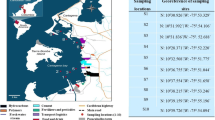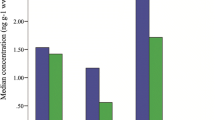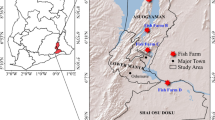Abstract
To examine temporal trends of organochlorine (OC) contamination in Lake Baikal and the Caspian Sea, concentrations of persistent OCs, such as DDT and its metabolites (DDTs), polychlorinated biphenyls (PCBs), hexachlorocyclohexane (HCHs), chlordane compounds (CHLs), tris(4-chlorophenyl)methane (TCPMe), and tris(4-chlorophenyl)methanol (TCPMOH), in the blubber of female seals were determined. Collections were made in 1992, 1993, 1995 and 1998. DDT concentrations in Baikal and Caspian seals showed a rapid decline during 1992 to 1998, while the concentrations of PCBs declined slowly. Elevated concentrations of HCHs were found in Caspian seals and there was no decline in their concentrations during 1993 to 1998, which could be due to extensive usage of HCHs around Caspian Sea in recent years. Trends of TCPMe and TCPMOH residues in Caspian seals were similar to that of DDTs. The pattern of PCB isomers in both Baikal seals and Caspian seals exhibited little temporal variations. Concentrations of non-ortho coplanar PCBs have declined at a faster rate than those of mono-ortho congeners. Compilation of available data on OC contamination in the North Pacific, Antarctic, Caspian Sea, Lake Baikal, and India suggested that the time trend of residues of contaminants during the 1990s were different among these regions. Residue levels of OC insecticides have declined slowly while PCBs remained at a steady state in the open oceans and the Antarctic. The magnitude of temporal variation in Lake Baikal seemed to be higher than that in the Caspian Sea. Residue concentrations of OCs have increased in Ganges River dolphins from 1989–92 to 1994–96, suggesting that tropical, developing countries are potential emission source of OCs.
Similar content being viewed by others
Author information
Authors and Affiliations
Additional information
Received: 17 April 2002/Accepted: 19 August 2002
Rights and permissions
About this article
Cite this article
Tanabe, S., Niimi, S., Minh, T. et al. Temporal Trends of Persistent Organochlorine Contamination in Russia: A Case Study of Baikal and Caspian Seal. Arch. Environ. Contam. Toxicol. 44, 0533–0545 (2003). https://doi.org/10.1007/s00244-002-2092-4
Issue Date:
DOI: https://doi.org/10.1007/s00244-002-2092-4




